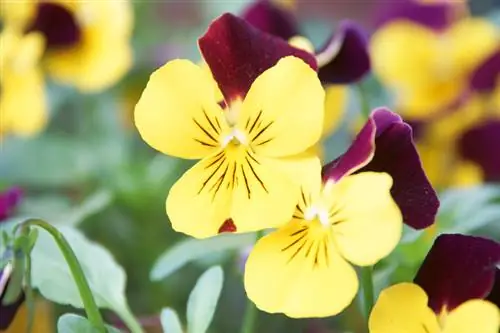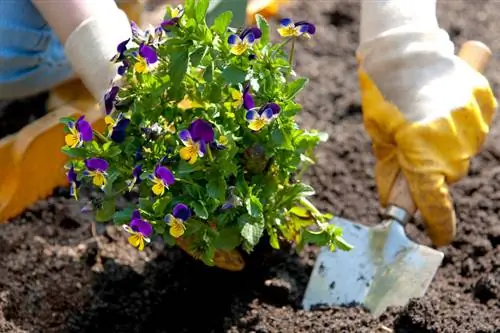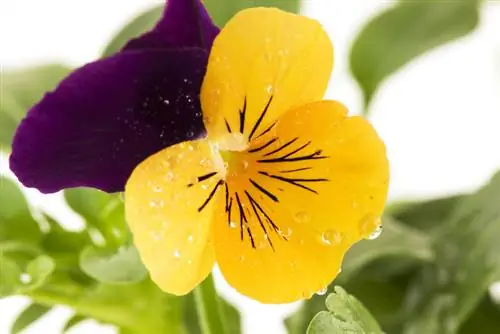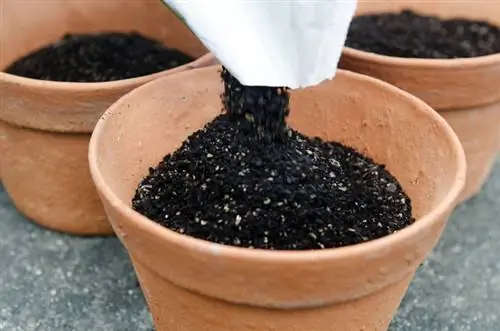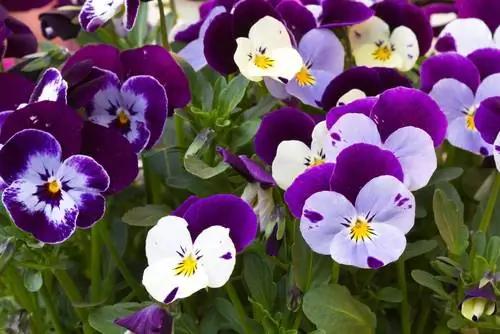- Author admin [email protected].
- Public 2023-12-16 16:46.
- Last modified 2025-06-01 06:02.
Their flowers are smaller than those of pansies. But they are extremely lovely and can be present all summer and into autumn. What else can you learn about horned violets if you look at them?

What does a profile for horned violets look like?
Horn violets belong to the violet plant family and originally come from the Pyrenees and northern Spain. They are hardy, evergreen and bloom from May to September. Horned violets prefer a sunny to partially shaded location and humus-rich, nutrient-rich soil. They are easy to care for and can be propagated by sowing, dividing or cuttings.
Short and to the point
- Plant family and genus: Violet family, Viola
- Origin: Pyrenees, Northern Spain
- Growth: herbaceous, low
- Flowering period: May to September
- Leaves: evergreen, ovate, notched
- Location: sunny to partially shaded
- Care: hardly any care-intensive
- Winter hardiness: up to -12 °C
- Propagation: sowing, division, cuttings
- Special features: edible, poisonous to cats
The horned violet - with horned flowers
Horn violets owe their name to a small spur. You can find it in the middle of the flowers. Horned violets can survive for several years. They are hardy down to -12 °C and like to grow wild.
Also interesting for local gardens
These plants originate in the Pyrenees and parts of northern Spain. But they also thrive in local gardens. The location should be sunny to partially shaded. A humus-rich, nutrient-rich and permeable subsoil is at least as important as brightness and warmth.
If you plant horned violets in your garden, you hardly need to care for them. In a suitable location, these plants do not need to be fertilized or watered. You should only remove the dead flowers. This has the advantage that new flowers develop as a result.
Viewed from bottom to top
They grow between 20 and 30 cm tall. Their growth is bushy to sprawling. A persistent rhizome forms in the soil. Egg-shaped, pointed leaves sprout from it on the surface, notched at the edge and hairy underneath. The leaves are evergreen.
The fragrant flowers form between May and June and can be admired until August/September. With a diameter of between 2 and 3 cm, they are smaller than those of pansies. Their color is violet or purple. Some hybrid varieties have different flower colors.
Tips & Tricks
These delicate creatures are prone to diseases such as powdery mildew and stem rot. They also like to eat snails and caterpillars. Therefore, ensure a comfortable climate and hardening in the form of fertilizer and spraying with garlic or horsetail decoction.

